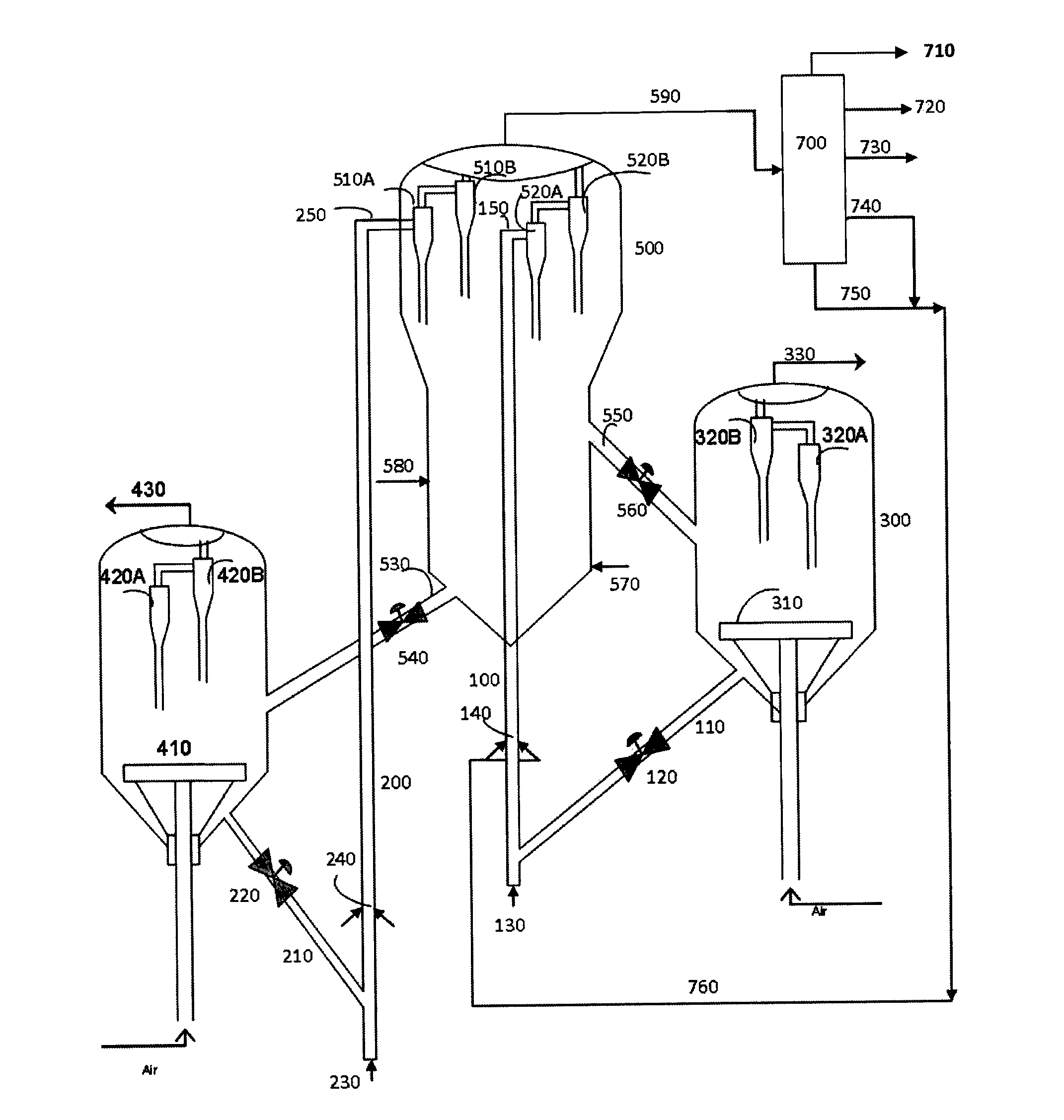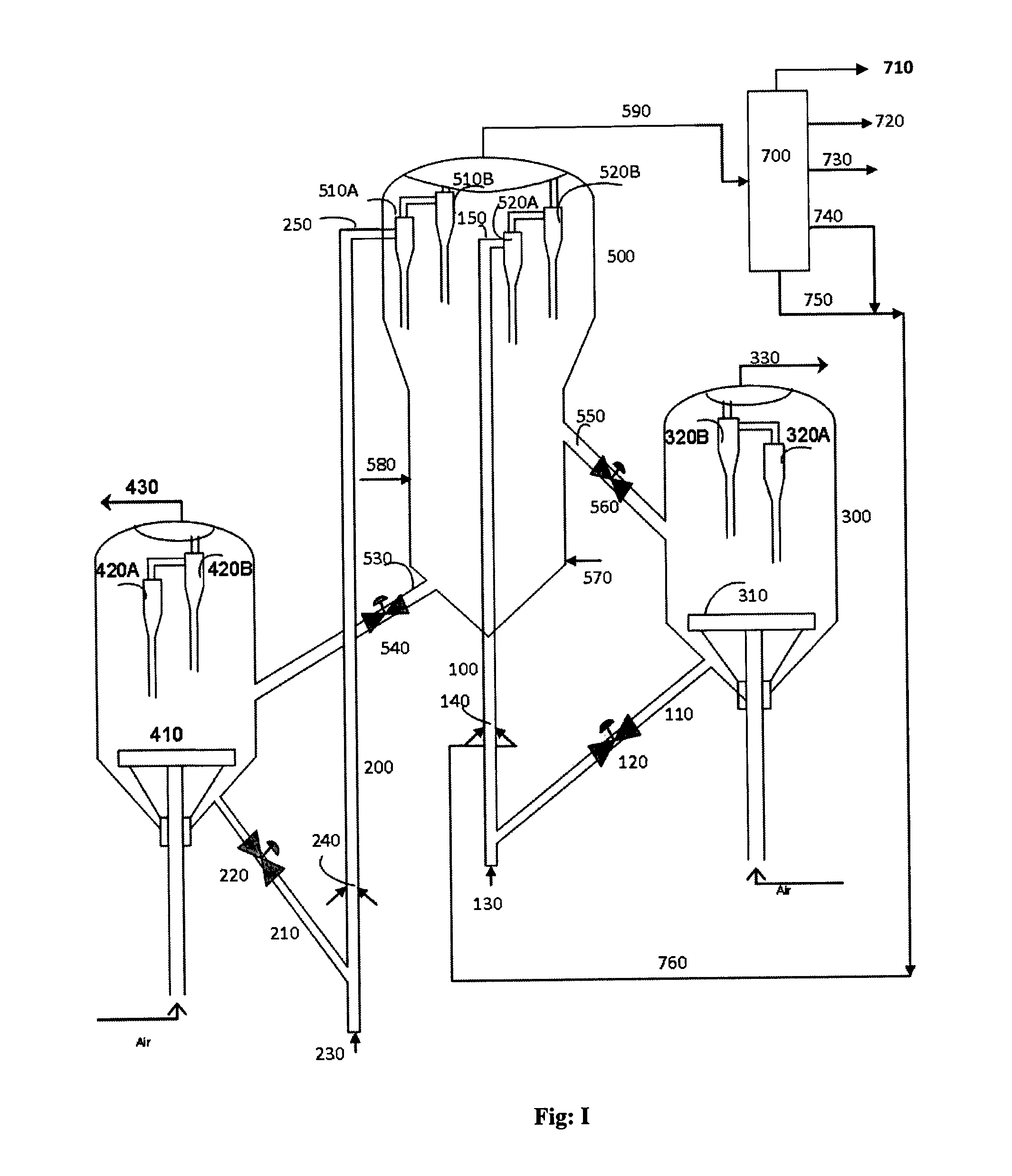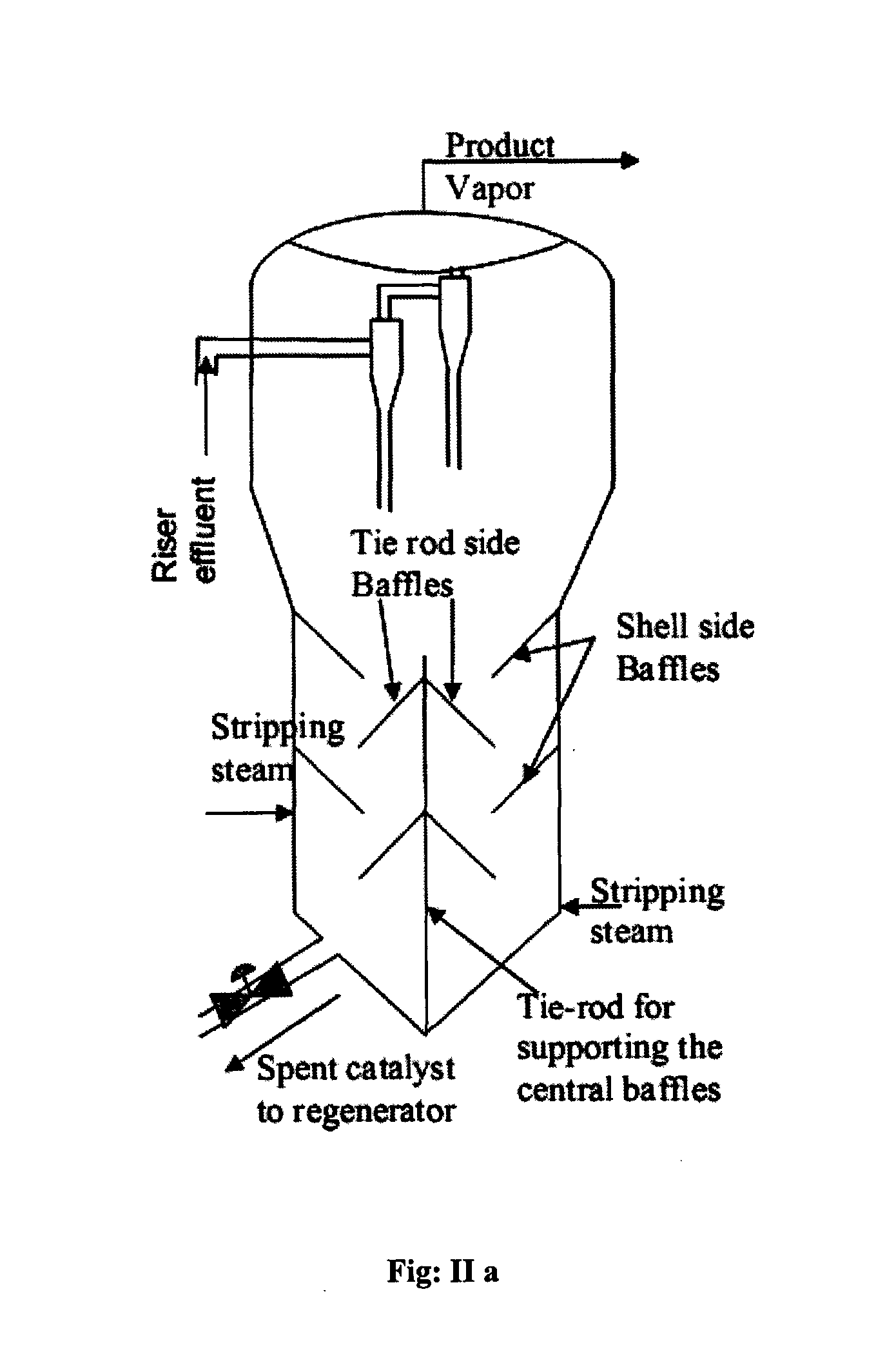Multi riser resid catalytic cracking process and apparatus
a catalytic cracking and multi-riser technology, applied in catalytic cracking, lighting and heating apparatus, hydrocarbon oil treatment, etc., can solve the problems of reducing the yield of gasoline, affecting the efficiency of fcc catalysts, and increasing pressure, so as to improve conversion efficiency, the effect of high catalyst longevity
- Summary
- Abstract
- Description
- Claims
- Application Information
AI Technical Summary
Benefits of technology
Problems solved by technology
Method used
Image
Examples
Embodiment Construction
[0025]According to this invention there is provided a continuous fluidized catalytic cracking (FCC) process for converting a hydrocarbon feedstock containing higher concentrations of impurities such as Conradson Carbon Residue (CCR), metallic and other impurities such as herein described, into lighter hydrocarbon products by employing multiple elongated riser reactors, a common stripper cum separator, common fractionator and multiple regenerators for regenerating adsorbent and catalyst used therein concurrently comprising the following steps:[0026]a) Contacting the feedstock with hot adsorbent supplied from the adsorbent regenerator in the first riser reactor, the adsorbent being lifted to the feedstock injection zone using lifting medium, where the feedstock gets vaporized, purified and undergoes mild cracking to obtain substantially impurities free hydrocarbons vaporous products comprising mainly heavy cycle oil and materials higher boiling than said heavy cycle oil with minor amo...
PUM
| Property | Measurement | Unit |
|---|---|---|
| particle density | aaaaa | aaaaa |
| particle size | aaaaa | aaaaa |
| particle size | aaaaa | aaaaa |
Abstract
Description
Claims
Application Information
 Login to View More
Login to View More - R&D
- Intellectual Property
- Life Sciences
- Materials
- Tech Scout
- Unparalleled Data Quality
- Higher Quality Content
- 60% Fewer Hallucinations
Browse by: Latest US Patents, China's latest patents, Technical Efficacy Thesaurus, Application Domain, Technology Topic, Popular Technical Reports.
© 2025 PatSnap. All rights reserved.Legal|Privacy policy|Modern Slavery Act Transparency Statement|Sitemap|About US| Contact US: help@patsnap.com



